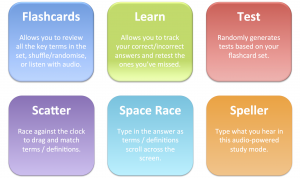Mar 24, 2015
Rethinking Student Feedback

admin
Depending on the subject matter and requirements for a course, students may not realize what they can’t do or don’t understand until it is too late — the final paper is handed in or the final exam is over. This post will help you rethink when and how students get feedback about their progress in the course to increase learning and mastery of the material. You may not be able to ditch the grade book in your next course, but the use of continuous feedback will help students understand why they received the grades they see there.

http://pixabay.com/p-520527/?no_redirect
“Why did I get a B on my paper?”
“Why didn’t I get a higher grade in this course?”
Chances are that at some point in a teaching career, an instructor hears this kind of question from students. In many cases, the answer may be obvious: “You didn’t hand in all the homework.” But often the answer is a little murkier: “Your final project wasn’t as good as others.” Depending on the subject matter and requirements for a course, students may not realize what they can’t do or don’t understand until it is too late — the final paper is handed in or the final exam is over. This post will help you rethink when and how students get feedback about their progress in the course to increase learning and mastery of the material. You may not be able to ditch the grade book in your next course, but the use of continuous feedback will help students understand why they received the grades they see there.
Provide Immediate Feedback
In some fields, textbooks have an online workbook or lab manual that allows students to practice skills and view answers immediately in order to improve their learning. But this is not always the case. Luckily, there are many applications available that can be used as a replacement for publisher content.
Polls can be used either in class or as preparation for a topic. Applications such as Poll Everywhere, Google Forms, and Qualtrics ask students to answer multiple choice questions, provide short answers, and vote for the best answers. The results can be discussed live in class or the instructor can review results ahead of time and use class time to review the students’ pain points.

Quizlet Functions
Quizlet is a collection of crowd-sourced study sets that allow students to learn from flash cards, practice spelling and pronunciation, take quizzes, and play games alone or as a team. The application has been around since 2005 and has over 75 million practice sets. There are existing study sets for every chapter of many textbooks and as well as ones centered on concepts or specific skills. You can write your own sets, search for applicable ones, or ask students to create their own. The instructor version of the application allows you to have a grade book to review their progress.
If you use videos to deliver content, think about using platforms such as eduCanon (allows you to insert questions and polls into a video), Vialogues or VoiceThread in Sakai (students can insert comments at any point in the video) and Teachem (allow you to create flashcards and study aids to go with videos). These give students the opportunity to be tested on content immediately, instead of waiting until after a lecture or reading a chapter of a book.
Implement Process Writing
Effective academic writing is one of the most difficult skills to master and writing conventions vary depending on disciple, context, and audience. As an instructor, the best practice is to provide models, outline expectations, and provide sufficient follow-up feedback. Think about using rubrics to grade papers, showcase excellent work from previous semesters, and share those before the assignment is due. If there is adequate time, ask students to submit parts of their project for review during various points in the semester.
One strategy for improvement over a semester is to organize all of the students’ writing in one place for you and them to access and review easily. Require students to create a Box or Google Drive folder to post their work and share with you privately. There you can make inline edits, add comments, and share a rubric grade with each student.
Another idea is to implement peer review of writing. Peer feedback is useful not only because students receive comments about their writing, but reading the work of others improves their understanding of good writing and the subject matter they are studying. The assignment tool in Sakai allows students to make comments and assign grades to each others’ writing anonymously.
Change It Up
Written comments on a paper or exam aren’t always impactful. The student is likely to only look at the grade on the front sheet and skip any comments or corrections. You can get their attention by recording video or audio messages to provide feedback on their writing or even to remind them what to study for the next quiz. There are numerous options for recording multimedia notes. You can use Warpwire to do a webcam recording that is NetID protected. Try recordmp3.org or Vocaroo for audio messages to send to students by email or put in a feedback folder.
Finally, you can let others take over your job sometimes. Instruct students ask each other for answers and feedback throughout the semester. Students can use the Questions and Answers or Piazza tools in Sakai to help each other with the material, study for exams, and solve problems.